From Neanderthals painting on the walls of their caves, to Gilgamesh’s 2000BC epic poem engraved into stone across Asia and Europe, the human race has enjoyed storytelling. In the current era, the internet has provided us with access to an audience that storytellers could have only been dreamed of in former times.
However, with that has come a precarious challenge of how to cut through when you are competing in a pool of content that sees 400 new hours of content posted on YouTube per minute, 300 million users posting stories on Instagram per day, and 5000 books published on Amazon per day.
As marketers who are trying to instigate action and often, gain help and support from our audience, we arguably need the most help of all in getting our stories heard. It is with this in mind that I have put together my tips on how to make sure your story gets the attention it deserves in the online hubbub.
Sometimes one person’s story is more powerful than the whole story.
“If I look at the mass, I will never act. If I look at the one, I will.” Mother Theresa
Whatever your perspective on Mother Theresa, this famous quote pithily describes a strange and disappointing human psychological tendency called ‘statistical numbing’, whereby the more people one is asked to help, the less they are likely to give. In a study in which people were asked what they'd donate to life-saving efforts that might help save one child, and then again how much they’d donate for eight children, on average people offered $5 for one child, and $11.00 to cover eight children. You just have to look at the devastating picture of Alan Kurdi to show that sometimes just one poignant image that shows the true and vivid reality of what the outcome of a tragedy is on the individual, is more powerful than being presented with the full scale of the problem. The number of average daily amount of donations to the Swedish Red Cross campaign for Syrian refugees, for instance, was 55 times greater in the week after the photo (around $214,300) than the week before.
There are countless examples of some great content marketing that use the individual’s story to convey the impact of the greater problem. Probably the easiest is Dove, who’s Real Beauty campaign has arguably created a movement in beauty advertising. Their series of stories highlighting different women’s battle with body image and standards of beauty resonates emotionally and personally in a way that the generic story of women battling with an impossible standard of beauty never could.
Sometimes (actually, most of the time) people will only pay attention when it relates to their trivial problems.
"Privilege is when you think that something's not a problem because it's not a problem for you personally….” David Gaider
In this scenario, the question is how to make the privileged as defined by David Gaider, want to help solve a problem that is not theirs. There’s no secret answer (if we had it, I guess we’d have world peace), but there’s lots of ways of increasing your chances. One of those is storytelling in a way which finds the common parts of the human condition and using them to create that link between the privileged, and those in need. My favourite example is from Save The Children and is again, related to the Syria conflict. The story is told using vignettes showing a young girl living a typical, suburban London life. Slowly, her privileged, familiar, peacetime reality is eroded by increasingly shocking signs of conflict. What originally seemed like a relatable story set in a local and recognisable landscape steadily became the reality we feel is so distant from us. Suddenly, we are confronted with the fact our privilege is a mere coincidence of our birthplace and that the problem could easily be our own. The video, made by London agency ‘Don’t Panic, was shared over 2.5 million times and with over 100 million views, was the most successful cause-related video ever.
Sometimes stimulating the imagination is better than telling the story.
“Everything you can imagine is real.” Pablo Picasso
There are moments when telling the whole story is the right thing to do and there are other moments when asking your audience to imagine the rest of the story can be even more powerful. V. S. Ramachandran, Director of the Center for Brain and Cognition at the University of California, has published evidence that shows that imagination has the power to light up the brain in the same places and in the same way as if it were happening in reality. When attention spans are decreasing, meaning we have less and less time to engage our audience in a story, a cleverer way is the use the first seconds to set the audience’s imagination churning.
Gyro’s ‘End the Cycle’ campaign, made for the Joe Torre Safe At Home Foundation. Both the films and the images tell you enough so that you mind wanders into a place you would rather it wasn’t, but that reverberates and reminds you that some people can’t just escape the reality by clicking pause.
Sometimes, you don’t need to force tragedy onto people.
“Peace cannot be kept by force; it can only be achieved by understanding.” Albert Einstein
If I asked 5 people to describe a charity advert, I guess a malnourished child with impossibly big eyes would probably make up 80% of the responses. It’s tragic, but with news, YouTube, and just sheer repetition of the same approach, people have been over-exposed to such images. An advert that came out recently that took a completely different approach was this ‘Batman ad’ made by War Child, MassiveMusic, Sony Universal and In Case of Fire. From moment one, you know the context and can guess the message, but the story takes you by surprise. The very juxtaposition between the two protagonists; the familiar Hollywood superhero, Batman, and the sweet, but unkempt Syrian child that creates a feeling of heartbreak that seeps a little bit deeper than a typical charity ad could.
All the time, authenticity is key.
"The keys to brand success are self-definition, transparency, authenticity and accountability." Simon Mainwaring
So far, I have mainly focused on storytelling in the verbatim sense of the word, but for this particular tip, I am talking about brand storytelling. In fact, the word story can imply fiction and so actually, maybe what I am recommending is to do the exact opposite of telling stories when it comes to your brand! The fact is that, although I am loath to use the marketing buzzword of the decade, authenticity is critical. I’ve written other articles about how important it is for Millennials that brands walk their talk, and that all kudos is lost as soon as that’s gone.
Outdoor Gear store, Rei, have gifted me with the best example of this with their Black Friday, #optoutside campaign. Bucking the trend and ignoring the clear business advantage, instead of trying to monopolise on the sales boost that Black Friday offers most businesses, they closed all their stores on Black Friday and encouraged their target audience to do the very thing they help them do: Explore the outdoors instead. Another similar brand with an awe-inspiring number of campaigns that prove they practice what they preach is Patagonia. From ‘The Dam Truth’, to ‘Why All the Baggage’, you can be sure that whatever you invest is either committed to quality goods or investment in good causes.
If you still aren’t convinced, think of it this way. The more authentic the story, the more authentic the response will be. Though ‘going viral’ is certainly not something that is undesirable, the reality is that this tends to be a fleeting interaction that does not always translate into a deeper emotional connection with the brand or the cause. If you can tell your story authentically, the quality of reaction will be more valuable in the long term than the short-term satisfaction of quantity! Because even in an era of fake news and alternative facts, there is power in truth and realness. Those are the stories that will cut through the digital noise and, hopefully, last.
About the Author

After working for 6 years in charity marketing in London, Jemima Jordan moved to Berlin to try out working agency-side. She has now allotted over 10 years of experience in Marketing, Communications and Digital, and specialises in CSR and youth marketing. She also likes to paint!

